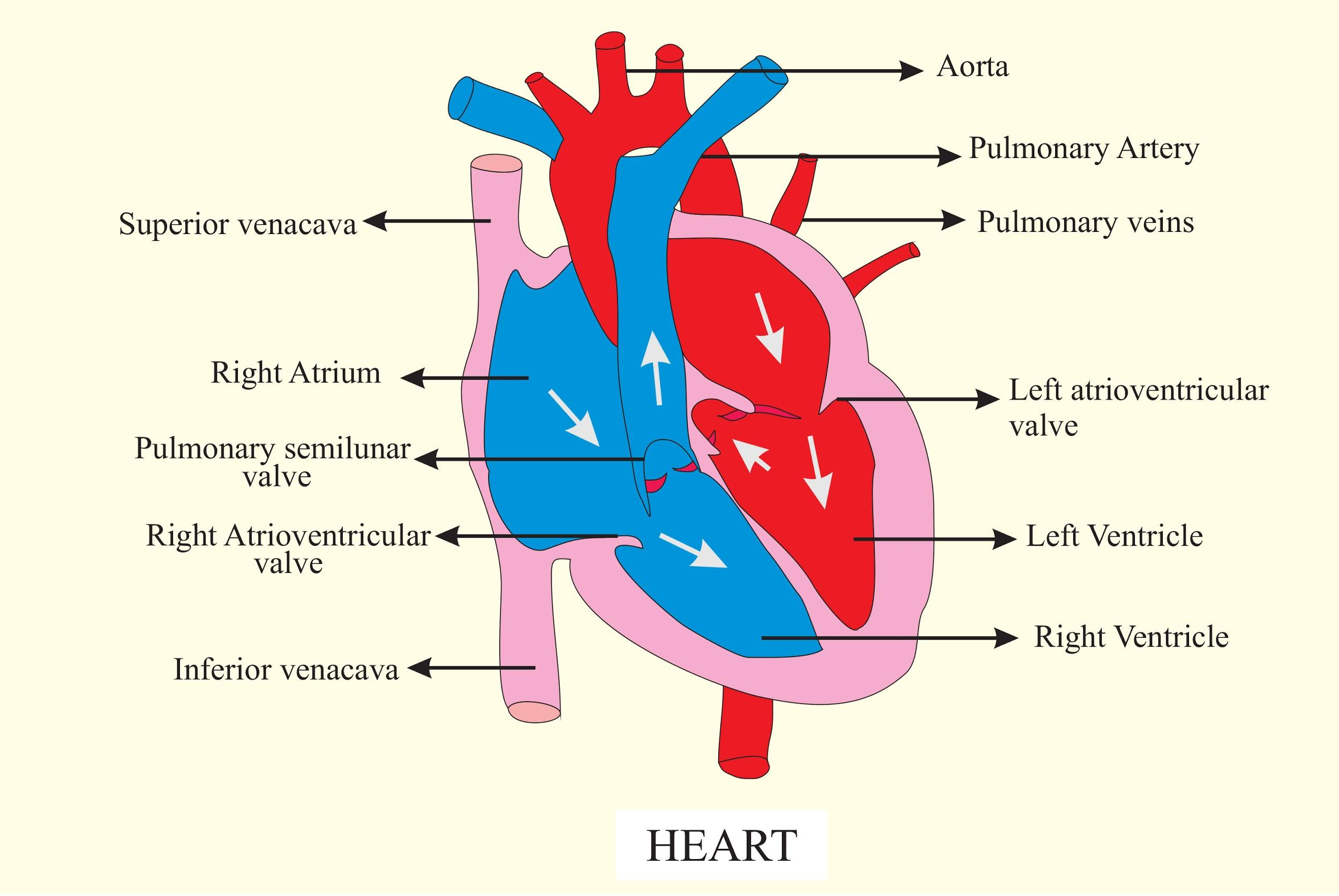
Answer
437.7k+ views
Hint: Superior vena cava, which returns deoxygenated blood from the body to the right atrium of the heart. The SVC is one of the 2 wide veins through which blood is returned to the right side of the heart from the body. A broad vein that transports the deoxygenated blood from the lower and middle body to the right atrium of the heart is the inferior vena cava (or IVC).
Complete answer:
a. Deoxygenated blood from the upper part of the body (head and neck) is carried to the right atrium by the superior vena cava.

b. The inferior vena cava carries deoxygenated blood to the right atrium from the lower body parts (pelvis, lower limbs, gonads, back muscles, kidneys, liver, etc.).
c. Deoxygenated blood from the right ventricle is carried to the lungs by the pulmonary artery.
d. Oxygenated blood is transported from the lungs to the left atrium through the pulmonary vein.
In the right atrium, blood joins and travels into the right ventricle. The blood is pumped to the lungs by the right ventricle where it is oxygenated. The pulmonary veins that join the left atrium carry the oxygenated blood back to the heart.
Additional information: Oxygen-poor blood is transferred from the right ventricle to the lungs through the pulmonary circulation, where blood takes up a fresh blood supply. Then it returns blood rich in oxygen to the left atrium.
The functional delivery of blood to all body tissue is provided by systemic circulation. It brings oxygen and nutrients to the cells and sucks up waste products and carbon dioxide. Systemic circulation delivers oxygenated blood to the capillaries in the tissues of the body from the left ventricle, via the arteries. The deoxygenated blood returns through a system of veins to the right atrium of the heart from the tissue capillaries.
So, the correct answer is ‘(c) A-t, B-r, C-p, D-q’.
Note: In a fetus, most circulatory processes are like those in an adult, but there are some significant variations because before birth the lungs, gastrointestinal tract, and kidneys do not function. The fetus obtains its mother's oxygen and nutrients and also relies on maternal circulation to take away carbon dioxide and waste materials.
Complete answer:
a. Deoxygenated blood from the upper part of the body (head and neck) is carried to the right atrium by the superior vena cava.

b. The inferior vena cava carries deoxygenated blood to the right atrium from the lower body parts (pelvis, lower limbs, gonads, back muscles, kidneys, liver, etc.).
c. Deoxygenated blood from the right ventricle is carried to the lungs by the pulmonary artery.
d. Oxygenated blood is transported from the lungs to the left atrium through the pulmonary vein.
In the right atrium, blood joins and travels into the right ventricle. The blood is pumped to the lungs by the right ventricle where it is oxygenated. The pulmonary veins that join the left atrium carry the oxygenated blood back to the heart.
Additional information: Oxygen-poor blood is transferred from the right ventricle to the lungs through the pulmonary circulation, where blood takes up a fresh blood supply. Then it returns blood rich in oxygen to the left atrium.
The functional delivery of blood to all body tissue is provided by systemic circulation. It brings oxygen and nutrients to the cells and sucks up waste products and carbon dioxide. Systemic circulation delivers oxygenated blood to the capillaries in the tissues of the body from the left ventricle, via the arteries. The deoxygenated blood returns through a system of veins to the right atrium of the heart from the tissue capillaries.
So, the correct answer is ‘(c) A-t, B-r, C-p, D-q’.
Note: In a fetus, most circulatory processes are like those in an adult, but there are some significant variations because before birth the lungs, gastrointestinal tract, and kidneys do not function. The fetus obtains its mother's oxygen and nutrients and also relies on maternal circulation to take away carbon dioxide and waste materials.
Recently Updated Pages
What is the meaning of celestial class 10 social science CBSE

What causes groundwater depletion How can it be re class 10 chemistry CBSE

Under which different types can the following changes class 10 physics CBSE

Article 46 of the Constitution of India refers to the class 10 social science CBSE

Which of the following sentences has a linking verb class 10 english CBSE

Which best describes consensus historiography A A bottomup class 10 social science CBSE

Trending doubts
Which are the Top 10 Largest Countries of the World?

How do you graph the function fx 4x class 9 maths CBSE

Fill the blanks with the suitable prepositions 1 The class 9 english CBSE

Difference between Prokaryotic cell and Eukaryotic class 11 biology CBSE

The Equation xxx + 2 is Satisfied when x is Equal to Class 10 Maths

Why is there a time difference of about 5 hours between class 10 social science CBSE

Differentiate between homogeneous and heterogeneous class 12 chemistry CBSE

What is pollution? How many types of pollution? Define it

Give 10 examples for herbs , shrubs , climbers , creepers




